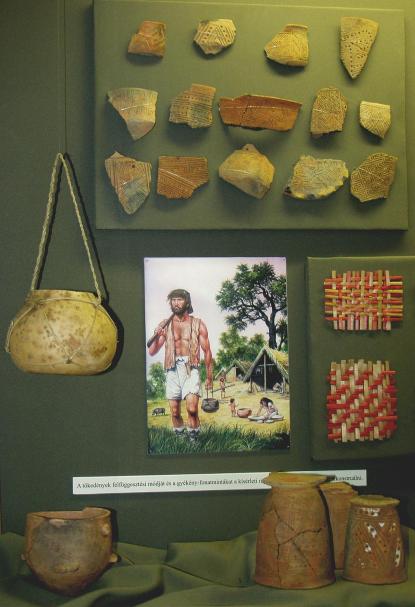2025. July 11. Friday
Village Museum - Szegvár
|
|
Address: 6635, Szegvár Hunyadi János utca 31.
Phone number: (63) 313-352, (20) 567-9298
E-mail: tancosnora@freemail.hu
Opening hours: 01.04-31.10.: Wed-Fri 9-13, Sat-Sun: on prior notice
|
Museum tickets, service costs:
|
Ticket for adults
|
400 HUF
|
|
|
Ticket for students
|
200 HUF
|
|
|
Group ticket for students
(from over 10 people)
|
100 HUF
|
|
|
Ticket for pensioners
|
200 HUF
|
|
|
Ticket for families
(2 adults + 3 children)
|
600 HUF
|
/ family
|
|
Program ticket for students
|
200 HUF
|
|
|
Guide
|
1500 HUF
|
|
|
Photography
|
1000 HUF
|
|
|
Video
|
1000 HUF
|
The name Szegvár can be found both in archaeology lexicons and reference books about the early history of humanity. It is because of the Neolith quarry called "Tűzköves" close to the eastern suburbs of the village.

The first excavations were overseen by József Csalog in the middle of the 20th century. Later on the effort was continued by József Korek, Katalin Hegedűs and Ferenc Horváth. Based on the results, it is believed that the village was a kind of centre between 5000 and 4600 BC embracing the era of Szakálhát- and Tisza Culture. During this time, a 4 meter thick mound piled up in which archaeologists found remains of 7 various settlements within 29 layers. Tools, pottery, mostly fragments, and bones of animals these people consumed were excavated in abundance.

The first excavations were overseen by József Csalog in the middle of the 20th century. Later on the effort was continued by József Korek, Katalin Hegedűs and Ferenc Horváth. Based on the results, it is believed that the village was a kind of centre between 5000 and 4600 BC embracing the era of Szakálhát- and Tisza Culture. During this time, a 4 meter thick mound piled up in which archaeologists found remains of 7 various settlements within 29 layers. Tools, pottery, mostly fragments, and bones of animals these people consumed were excavated in abundance.
